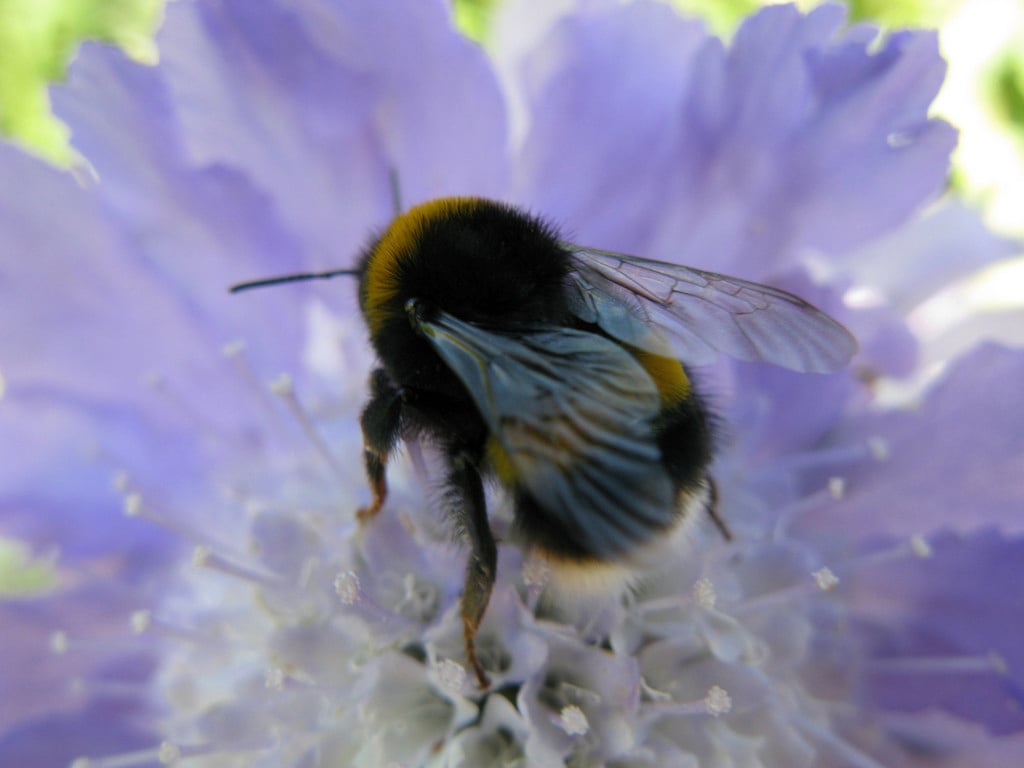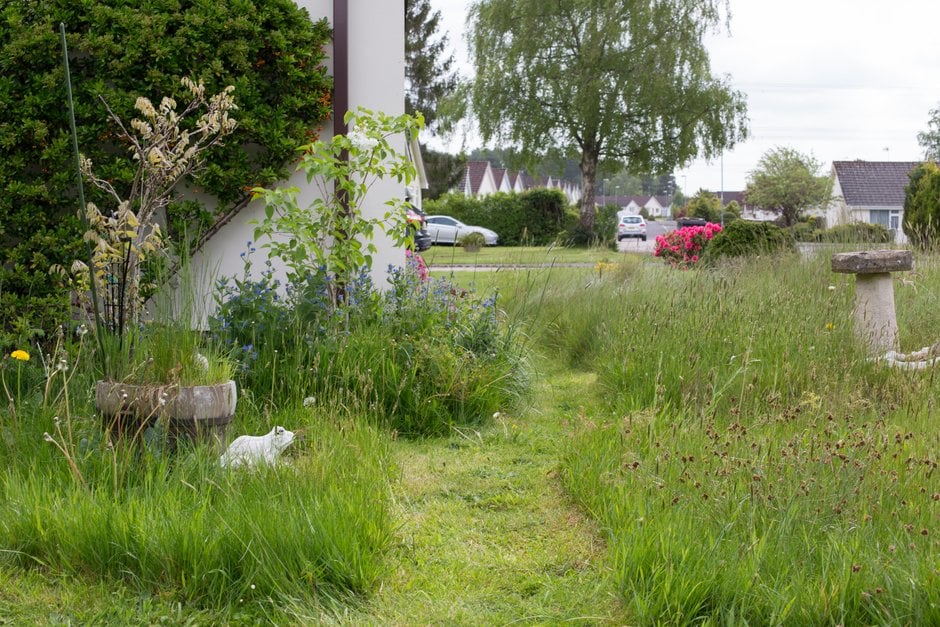Lawn weeds: selecting weedkillers
A sprinkling of wildflowers in a lawn can be a joyous thing for gardeners and wildlife, increasing plant and animal diversity in your garden. However, where a gardener chooses to create a more traditional green swathe, some control of the plants that are not grass may be needed. This can be done by good cultivation and by digging out, but lawn weedkillers are widely available too. Below you can find details of which weedkillers work best for tackling specific weeds.
Quick facts
Weedy lawns can be turned into wildflower meadows
Try cultural methods of control, rather than resorting to weedkillers as your first option
Slender speedwell, field woodrush and mind-your-own-business are resistant to weedkillers
Many weeds need more than one application of weedkiller
Always follow the instructions on the weedkiller
Make sure you use the right product: some are ineffective on specific weeds
Practical considerations
Weedy lawns can make great wildflower meadows, providing a rich habitat for insects and other wildlife. Learn more about making the most of lawns as a wildlife habitat and ways to help our bees.

Bees in your garden

Lawn and mini-meadow habitats
However, if you want to create a lawn that is mainly or solely grass, you will need to control some of the plants that seed into the turf. You can simply dig out some weeds with a small handfork or weed grubbing tool.
For general advice on on all the available methods, see our advice on lawns: weed control.
You will be most successful at controlling the weeds in your lawn if you can identify what they are. This is because certain weedkillers are more effective at killing some weeds than others. Not every gardener knows their lawn weeds, but help is at hand in the form of simple lawn care and British wildflower books. Alternatively, images can often be found on the internet.
Weedkillers for specific plants
The RHS believes that avoiding pests, diseases and weeds by good practice in cultivation methods, cultivar selection, garden hygiene and encouraging or introducing natural enemies, should be the first line of control. If chemical controls are used, they should be used only in a minimal and highly targeted manner.
If you decide to use weedkillers rather than cultural control methods, here is a guide to choosing the right weedkiller for your lawns. The aim here is to target the weeds you have and use the minimum amount of product needed to carry out the control. Follow these steps:
- Identify the weeds in your lawn
- Find them in the list below
- At the end of the name, it states a control method (numbers 1-7)
- Read the method below. This tells you which products to use (it states the active ingredients, such as fluroxypyr), and how many applications will be needed to control the weeds
- Now you know the active ingredients that will work, you can take these names to a garden centre or DIY store and get a product that contains these
- Buy the smallest amount of the product available to control the size of the area you have to treat
Weed list
Annual meadow grass (Poa annua): Will not be controlled by selective weedkillers. Feed to encourage other grasses. Seeds freely; always use grass box on the mower. Returf small areas of infestation. It is shallow-rooted and encouraged by frequent watering in dry weather.
Bird's foot trefoil (Lotus corniculatus): Method 6
Buttercup, creeping (Ranunculus repens): Method 3
Cat's ear (Hypochaeris radicata): Method 2
Celandine, lesser (Ficaria verna subsp. verna (syn.Ranunculus ficaria)): Method 7 – needs early treatment. Returf small areas containing celandine.
Chickweed, field mouse-ear (Cerastium arvense): Method 1
Clover, white (Trifolium repens): Method 1
Cranesbill, dove's foot (Geranium molle): Method 5
Daisy (Bellis perennis): Method 2
Dandelion (Taraxacum officinale): Method 3
Hawkbits (Leontodon spp.): Method 2
Hawkweed, mouse-ear (Pilosella officinarum): Method 3
Lesser trefoil (Trifolium dubium): Method 6 – thrives in weak and underfed turf
Mind-your-own-business (Soleirolia soleirolii): Little response to lawn weedkillers – returf infested areas in late autumn or early spring.
Parsley piert (Aphanes arvensis): Method 5 – it is encouraged by close mowing
Pearlwort (Sagina procumbens): Method 5 – it is encouraged by close mowing
Plantains (Plantago spp.): Method 3
Sea milkwort (Glaux maritima): Method 2
Selfheal (Prunella vulgaris): Method 2
Silverweed (Potentilla anserina): Method 4
Smooth hawk's-beard (Crepis capillaris): Method 3
Sorrel, common (Rumex acetosa): Method 4 – apply lime in winter to prevent returning
Sorrel, sheep's (Rumex acetosella): Method 5 – apply lime in winter to prevent returning
Speedwell, slender (Veronica filiformis): Little response to lawn weedkillers. Re-seed or returf affected areas of lawn.
Woodrush, field (Luzula campestris): Little response to lawn weedkillers – apply lime in winter to prevent
Yarrow (Achillea millefolium): Method 5 – thrives in drought-weakened grass
The control methods
Method 1: Plants usually easily killed using one or two applications of weedkillers containing: mecoprop-P. Examples include Doff Lawn Weedkiller, Westland Resolva Lawn Weedkiller Extra or Miracle-Gro EverGreen Complete 4 in 1 (also contains fertiliser and mosskiller).
Method 2: Plants usually easily killed using one or two applications of weedkillers containing 2,4-D plus mecoprop-P or 2,4-D plus dicamba. Examples include Doff Complete Lawn Feed, Weed & Mosskiller, Vitax All in One Lawn Feed, Weed & Mosskiller or Westland Aftercut All-in-One Feed, Weed & Mosskiller (also contains fertiliser and mosskiller).
Method 3: Plants usually easily killed using one or two applications of weedkillers containing 2,4-D plus mecoprop-P or 2,4-D plus dicamba or fluroxypyr. Examples include Weedol Lawn Weedkiller, Westland Aftercut All-in-One Feed, Weed & Mosskiller or Vitax All in One Lawn Feed, Weed & Mosskiller (these also contains fertiliser and moss killer).
Method 4: Plants needing two or three applications of weedkillers containing 2,4-D plus mecoprop-P; 2,4-D plus dicamba; or MCPA. Examples include Vitax LawnClear 2, Weedol Lawn Weedkiller, Vitax LawnClear 2 Feed & Weed (also contains fertiliser), Doff Complete Lawn Feed, Weed & Mosskiller, Westland Aftercut All-in-One Feed, Weed and Mosskiller or Miracle-Gro Evergreen Complete 4 in 1 (these also contains fertiliser and moss killer).
Method 5: Plants needing two or three applications of weedkillers containing 2,4-D plus mecoprop-P; or 2,4-D plus dicamba. Examples include Doff Complete Lawn Feed, Weed & Mosskiller, Westland Aftercut All-in-One Feed, Weed and Moss killer or Vitax All in One Feed, Weed and Mosskiller (these also contain fertiliser and mosskiller).
Method 6: Plants needing two or three applications of weedkillers containing 2,4-D plus mecoprop-P; 2,4-D plus dicamba; or fluroxypyr. Examples include Weedol Lawn Weedkiller, Westland Aftercut All-in-One Feed, Weed and Moss killer or Vitax All in One Feed, Weed and Mosskiller (these also contain fertiliser and mosskiller).
Method 7: Plants needing two or three applications of weedkillers containing MCPA. Examples include Vitax LawnClear 2, Vitax LawnClear 2 Feed and Weed Liquid (also contains fertiliser) or Weedol Lawn Weedkiller.
Inclusion of a weedkiller product does not indicate a recommendation or endorsement by the RHS. It is a list of products currently available to the home gardener.
Get involved
The Royal Horticultural Society is the UK’s leading gardening charity. We aim to enrich everyone’s life through plants, and make the UK a greener and more beautiful place.